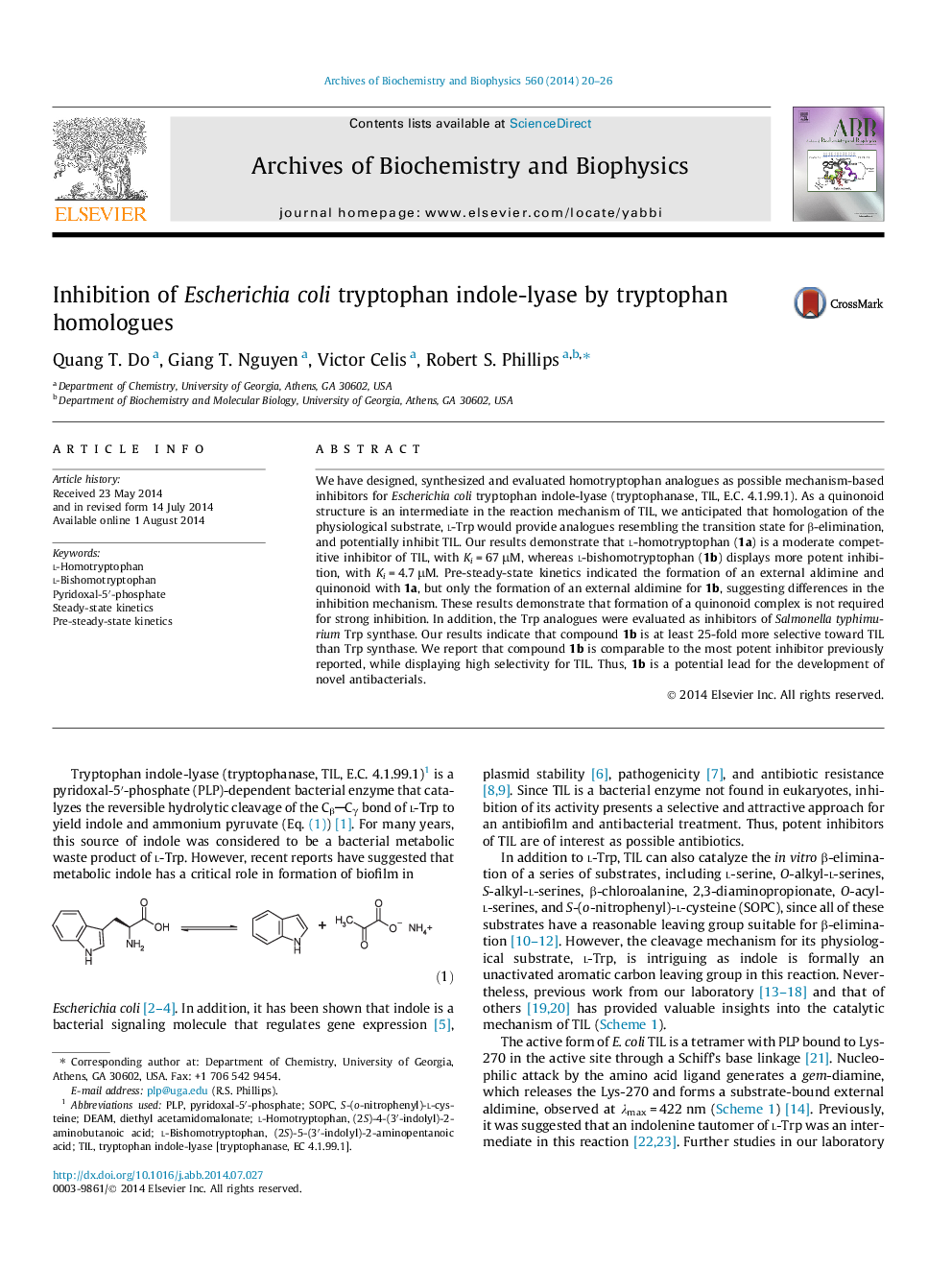| کد مقاله | کد نشریه | سال انتشار | مقاله انگلیسی | نسخه تمام متن |
|---|---|---|---|---|
| 1925088 | 1536342 | 2014 | 7 صفحه PDF | دانلود رایگان |

• Homologues of l-tryptophan, l-homotryptophan and l-bishomotryptophan, were prepared.
• These homologues inhibit tryptophan indole-lyase, but not tryptophan synthase.
• l-Bishomotryptophan is a more potent inhibitor than l-homotryptophan.
• l-Homotryptophan forms a quinonoid complex with tryptophan indole-lyase.
• l-Bishomotryptophan does not form a quinonoid complex with tryptophan indole-lyase.
We have designed, synthesized and evaluated homotryptophan analogues as possible mechanism-based inhibitors for Escherichia coli tryptophan indole-lyase (tryptophanase, TIL, E.C. 4.1.99.1). As a quinonoid structure is an intermediate in the reaction mechanism of TIL, we anticipated that homologation of the physiological substrate, l-Trp would provide analogues resembling the transition state for β-elimination, and potentially inhibit TIL. Our results demonstrate that l-homotryptophan (1a) is a moderate competitive inhibitor of TIL, with Ki = 67 μM, whereas l-bishomotryptophan (1b) displays more potent inhibition, with Ki = 4.7 μM. Pre-steady-state kinetics indicated the formation of an external aldimine and quinonoid with 1a, but only the formation of an external aldimine for 1b, suggesting differences in the inhibition mechanism. These results demonstrate that formation of a quinonoid complex is not required for strong inhibition. In addition, the Trp analogues were evaluated as inhibitors of Salmonella typhimurium Trp synthase. Our results indicate that compound 1b is at least 25-fold more selective toward TIL than Trp synthase. We report that compound 1b is comparable to the most potent inhibitor previously reported, while displaying high selectivity for TIL. Thus, 1b is a potential lead for the development of novel antibacterials.
Figure optionsDownload high-quality image (117 K)Download as PowerPoint slide
Journal: Archives of Biochemistry and Biophysics - Volume 560, 15 October 2014, Pages 20–26